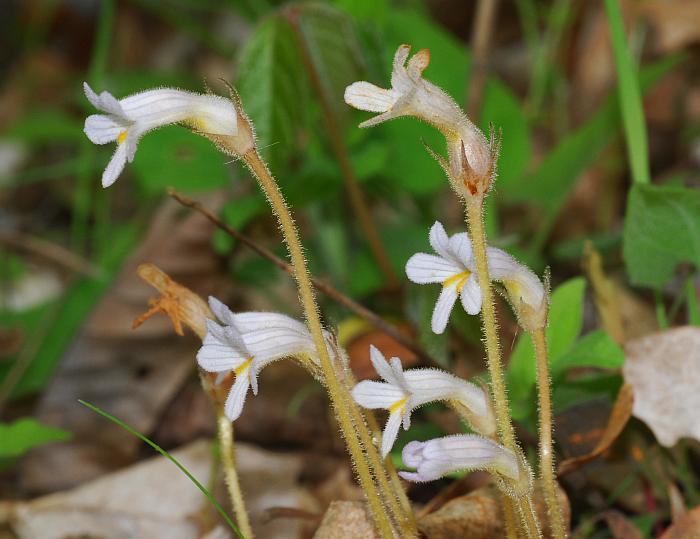Orobanche uniflora L.
One-Flowered Cancer-Root

Native
CC = 7
CW = 3
MOC = 54
© SRTurner
Orobanche uniflora L.One-Flowered Cancer-Root | |
 |
Native CC = 7 CW = 3 MOC = 54 |
© SRTurner |
|
Family - Orobanchaceae Habit - Annual holoparasitic forb, lacking chlorophyll. Stems - To 6 cm, 3-8 mm in diameter near base, not thickened, somewhat succulent, tan to brown or yellow-brown, often with scattered branches.
Leaves - Scale-like, densely spirally alternate near base of aerial stem, appressed, broadly ovate.
Inflorescences - Usually solitary terminal flower. Flower stalks 3-16 cm long, erect, tan, densely short glandular-hairy. Flowers - Calyces 5-10 mm long, the lobes triangular, acuminate, slightly longer than the tube. Corollas 14-24 mm long, erect in bud but later becoming somewhat deflexed, cream-colored to violet, with 2 yellow pleats in the throat, the lobes broadly obovate to oblong or nearly circular, rounded or broadly and bluntly pointed. Stamens 4, usually included. Style included or slightly exserted, the stigma capitate to slightly concave, somewhat 2-lobed.
Fruits - Ovoid capsules, 9-12 mm long, tapering abruptly to the persistent style, dehiscing longitudinally. Seeds numerous, minute.
Flowering - April - June. Habitat - Forests, prairies, calcareous glades and bluffs. Origin - Native to the U.S. Lookalikes - None. Other info. - This attractive little plant is often overlooked, being small and not very showy. It is found throughout most of Missouri except for the Mississippi Lowlands division and possibly the extreme northwest. It also ranges across most of the U.S. but with an unusual distribution, being mainly concentrated in three regions: western, northeastern, and Midwestern. It is largely absent from large portions of the Plains states. Photographs taken at Engelmann Woods Natural Area, Franklin County, MO, 4-27-2015, Danville Conservation Area, Montgomery County, MO, 4-18-2017, and Don Robinson State Park, Jefferson County, MO, 4-26-2019 (SRTurner). |